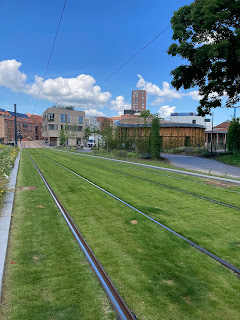Summary of Final Project

The final day of class we all shared 5-7 minutes presentations on a research topic of our choice. It was interesting to hear the wide variety of topics for 16 people! There are so many ideas and concepts for us to bring home. I was struggling to pick a topic I felt connected to. There were many things I enjoyed about the trip but my favorite was the biking. I feel like it sounds boring, whereas most people say "the XX was my favorite." As a true planning nerd, the bike lanes were my favorite. I told Rebecca I really enjoyed the concept of public and private space in Copenhagen and enjoyed the revitalization of the canals. After some brainstorming, she helped me realize all my favorite parts of the trip were about recreation. After concluding on this, I'm not surprised. It aligns with my personality and values. To create a formalized topic, I settled on how Copenhagen has created recreation destinations within the city that are most easily accessible by biking (or walking)





